SaaS, or Software as a Service, is a model for distributing software through the Cloud. Applications are hosted by the service provider. Discover the pros and cons of this model.
What is SaaS?
What are the benefits of SaaS?
Thanks to SaaS software guide, companies no longer need to install and launch applications on their own computers or in their Data Centers. The cost of acquiring hardware is thus eliminated, as are the costs of supply and maintenance, software licensing, installation and support . There are also several other advantages.
Instead of investing in software to install, and in equipment to support it, users subscribe to a SaaS offer. In general, the offer comes in the form of a monthly subscription whose price is proportional to the use . With this flexibility, companies can organize their budget with greater precision and ease. In addition, it is possible to terminate the subscription at any time to cut short the expenses.
Another advantage is the high scalability. Depending on their needs, the user can access more or fewer services and features on demand . The Software as a Service is therefore adapted to the specific needs of each business.
Likewise, rather than having to purchase new software regularly, users can rely on the SaaS provider to perform updates automatically and manage the addition of hotfix patches . The company therefore has less need for a team of internal IT specialists.
Finally, since SaaS applications are delivered via the internet, users can access them from any connected device and any geographic location . Accessibility is one of the great strengths of this model.
What are the disadvantages of SaaS?
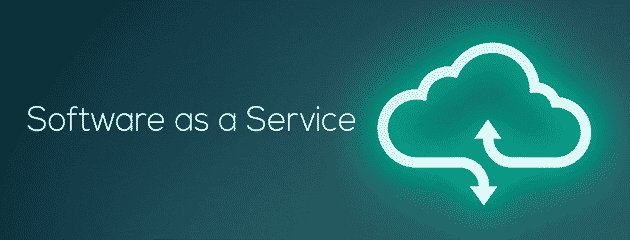
However, SaaS also has potential drawbacks. Companies must rely on external vendors to deliver software, maintain that software, provide itemized billing, and ensure a secure environment for company data . In the event of a service interruption, changes to the offer, a security breach or any problem, the consequences for the customer can be dramatic. To avoid such inconveniences, it is necessary for companies to carefully analyze the conditions of the service offered by the provider.
How does SaaS work?
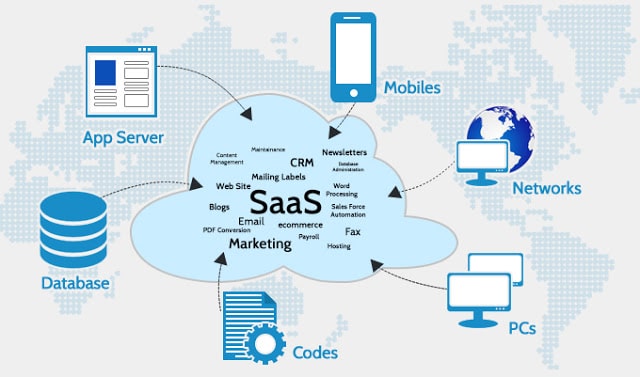
SaaS is closely related to the application service provider (ASP) and on-demand computing software service delivery models . The hosted SaaS application business model is similar to ASP. In both cases, the provider hosts the customer’s software and delivers it to end users via the internet.
With the Software on Demand model, the vendor offers customers network-based access to a single copy of an application specifically created by the vendor for Software as a Service distribution . The application source code is the same for all customers. When new features are rolled out, all customers can take advantage of them.
Depending on the service level, customer data may be stored locally, in the cloud, or both . Companies can integrate applications with other software using APIs. For example, a company can develop its own software tools and use the service provider’s API to integrate these tools into the offer.
What are the applications of SaaS?
There are SaaS applications for fundamental business technologies, such as email , sales management , CRM software ( CRM tools ), finance management, human resources management, invoicing software and collaboration . We must not forget the appearance of this SaaS application model in video games (Gaming as a service) and especially in the Internet of Things which is based on this software infrastructure in order to organize the data collected from thousands of sensors.
Why is SaaS now accessible to everyone?
In 10 years, the SaaS market has evolved a lot. In the beginning, no one was really sure of the relevance of this model . No one was sure that companies would agree to pay a subscription to access software, and banks were afraid of the risks.
Now, this lack of certainty has completely disappeared. Also, the prices have come down and the set up is much easier . However, it is still necessary to offer quality software at a reasonable price to stand out in the SaaS market.
How SaaS is changing the work of IT teams in companies?
According to IT professionals, Software as a Service is changing the way they do business. You would think that outsourcing applications makes their job much easier. However, even if the hosted applications do not need as much attention, the integration work is still significant . Additionally, enterprises tend to adopt more applications when moving to SaaS, increasing the integration workload. Also, if the cloud-hosted application encounters a problem, it’s up to the IT person to take over.
With the rise of SaaS, IT professionals need to think about how their business will be transformed . On-premise software is less and less adopted, unlike SaaS. Fortunately, while the benefits are many, the impact on IT teams is minimal.
SaaS or IaaS, which is the best option?
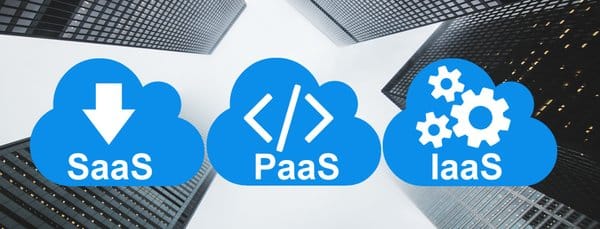
IaaS (Infrastructure as a Service) is often the first choice for companies looking to move data from their data center to the cloud. In practice, however, SaaS can be more advantageous. Software as a service is very useful for applications that do not offer a competitive advantage, and these solutions are more and more numerous on the market . By using SaaS for certain applications, the company can save IT resources and get rid of maintenance constraints.
Of course, the choice between IaaS and SaaS depends on the main activity of the company. The last-mentioned model is useful for firms that want to delegate workloads to a vendor, especially if they don’t have skilled in-house employees . Similarly, if a company just wants to use an application without making any changes to it, they can just install it on their cloud infrastructure. However, if it wishes to update or modify it, SaaS may be a more suitable solution to avoid having to rewrite all the code.
Migrating applications to the cloud, neglected for some time, is making a comeback for companies that wish to outsource difficult-to-manage and maintain applications such as SAP and Oracle . IaaS was initially the most popular choice, but requires the presence of professionals capable of managing servers, choosing operating systems, loading applications, managing security and performing updates. SaaS is therefore more suitable for certain companies.
Several SaaS applications like Salesforce, Gmail and Office 365 are so widely used that companies are confident and have no real reason not to rely on them anymore . Similarly, this market has become so robust that application vendors who do not have a strategy in this area are struggling to take off. Thus, even if the IaaS market seems destined for strong growth, it would be wrong to think that this market is about to be relegated to the background.
The future of SaaS
Today, artificial intelligence (AI) runs deep in the veins of society. AI has the potential to disrupt the SaaS landscape in various ways, improving key characteristics of the SaaS model at every level. When SaaS combines with the capabilities of AI, it enables companies to extract more value from their data. It can also automate and personalize services, improve security, and complement human capabilities.
Machine Learning is one of the fastest growing segments of software. As such, it’s a hot SaaS topic right now. ML is used in SaaS to automate responsiveness in customer service reports and applications, such as AI-powered chat operations with live chatbots. It also helps automate the SaaS integration process. A new injection of ML innovation empowers SaaS services to self-improve, delivering a level of intelligence and operational efficiency.
The third of the key trends in the SaaS industry is data-driven . As digital transformation accelerates across industries, businesses across all sectors are turning to data. These allow them to streamline their organizations while gaining a better understanding of their customers or users. Investments in analytics-driven software-as-a-service innovations are set to skyrocket.
The fourth SaaS trend is vertical SaaS. While horizontal SaaS focuses on customers across all industries and sectors, vertical SaaS is fully customizable. It targets customers from specific industries and supply chains . Examples are healthcare, retail or modern logistics analytics software.
As the SaaS industry evolves and innovation increases, many developers or vendors will focus on customer retention in addition to customer acquisition. That said, SaaS should now migrate further into the realm of PaaS. These are developments that allow companies to create custom applications to complement their original services. One of the main goals of PaaS evolution will be to help startups and relatively new companies grow quickly and successfully.
5 Reasons Your Business Needs to Go SaaS Now
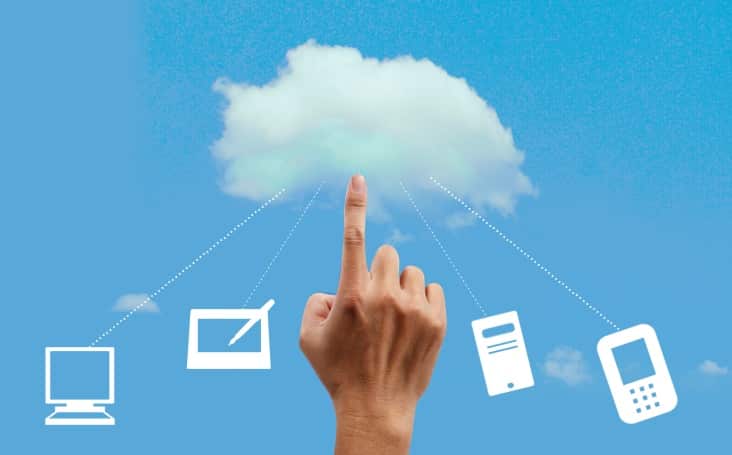
In 2017, moving to SaaS is a very profitable investment for companies for several reasons. First, software as a service helps reduce costs . They are generally less expensive than on-premise systems, since the company only needs to implement the necessary software and can then access it through a simple internet connection.
In addition, Software as a Service eliminates the need for maintenance and repair . Cloud services offer backup options, and any service outages have minimal impact because service providers have more staff than most companies, and can therefore quickly remedy problems. Data recovery and backups are supported within data centers .
They also save space. On-premises solutions require room for servers, hardware, and staff, not to mention cables and ventilation. On the contrary, they do not require any additional physical space. Server security is left in the hands of vendors.
Additionally, updates are managed by service providers, ensuring software is always up-to-date. Some on-premises software can be customized, but these customizations are usually tied to the software version currently deployed.
Finally, the SaaS platform significantly reduces deployment times compared to on-premise systems . A cloud system can be deployed in multiple regions, across various business divisions, and avoid the costs associated with such deployments. No additional hardware is required. Thus, companies do not need to waste time procuring IT infrastructure and VPN access at different locations.
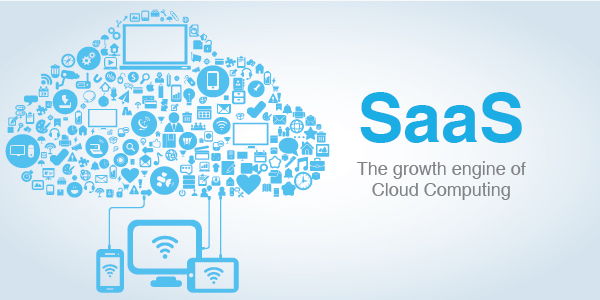
Dependence on external vendors for software delivery and maintenance introduces a level of reliance that requires careful consideration. Companies must weigh the benefits against the challenges to ensure a balanced and effective utilization of SaaS solutions in their operations.”